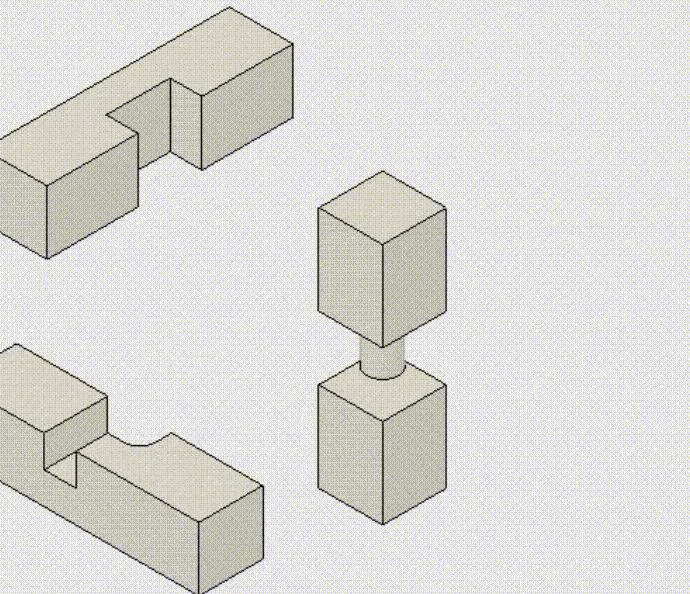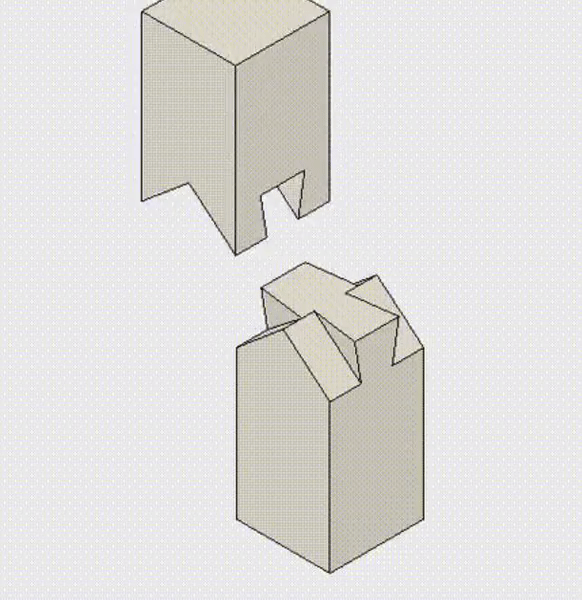Before screws, nails, glue and other fasteners, joinery was a matter of complex interlocking forms that shaped not only the structure but also the aesthetic of what was built.
For generations, Japanese wood craftsmen and their carpentry guilds were known to carefully protect trade secrets of their construction techniques. Even as the approaches found visual representation in print publications, it was often hard to visualize how they worked.
????? Shihou-hozo-tsugi pic.twitter.com/vEbvfEek98
— The Joinery (@TheJoinery_jp) October 5, 2016
These animated 3D representations communicate the inner workings of these traditional techniques in a way that no static rendering or model could hope to do, depicting them in motion through the assembly process.
?????? Sumi-nihou-kama-tsugi pic.twitter.com/Xc8Vik1W0t
— The Joinery (@TheJoinery_jp) September 17, 2016
Created by a Japanese fan of woodworking, they were made using Fusion360 and derived from historical documents and precedents. He has so far posted dozens of these joinery techniques, many of them highly complex (featuring multiple interlocking parts, twists and turns).
????????? Han-isuka-sao-shachi-tsugi pic.twitter.com/AaGICBbcVp
— The Joinery (@TheJoinery_jp) September 5, 2016
???????? Watari-ago-niju-hozo-shikuchi pic.twitter.com/4U3hrvFMGt
— The Joinery (@TheJoinery_jp) September 1, 2016
????????? Hako-aikaki-shachi-sen-shikuchi pic.twitter.com/FKRVB8uDVt
— The Joinery (@TheJoinery_jp) July 6, 2016
?????? Hako-shachisen-tsugi pic.twitter.com/NOhU3ktifp
— The Joinery (@TheJoinery_jp) June 3, 2016
????? Hako-kakushi-tsugi pic.twitter.com/1pXO6v1RhE
— The Joinery (@TheJoinery_jp) May 31, 2016
?????? Nejire-kumi-tsugi pic.twitter.com/nyrJCko6Gb
— The Joinery (@TheJoinery_jp) May 21, 2016
???? Kawai-tsugite pic.twitter.com/WQwxeZ7t4M
— The Joinery (@TheJoinery_jp) May 17, 2016
?????? Shinozashi-ari-shikuchi pic.twitter.com/3AcAt5WU6B
— The Joinery (@TheJoinery_jp) May 4, 2016
????? Shihou-hozo-tsugi pic.twitter.com/vEbvfEek98
— The Joinery (@TheJoinery_jp) October 5, 2016
While modern-day technologies have replaced historical joints in most everyday applications, they could also be positioned to bring them back into play — with 3D-printing devices readily available, the sophisticated cutting that used to be done by hand can be done by machine.

